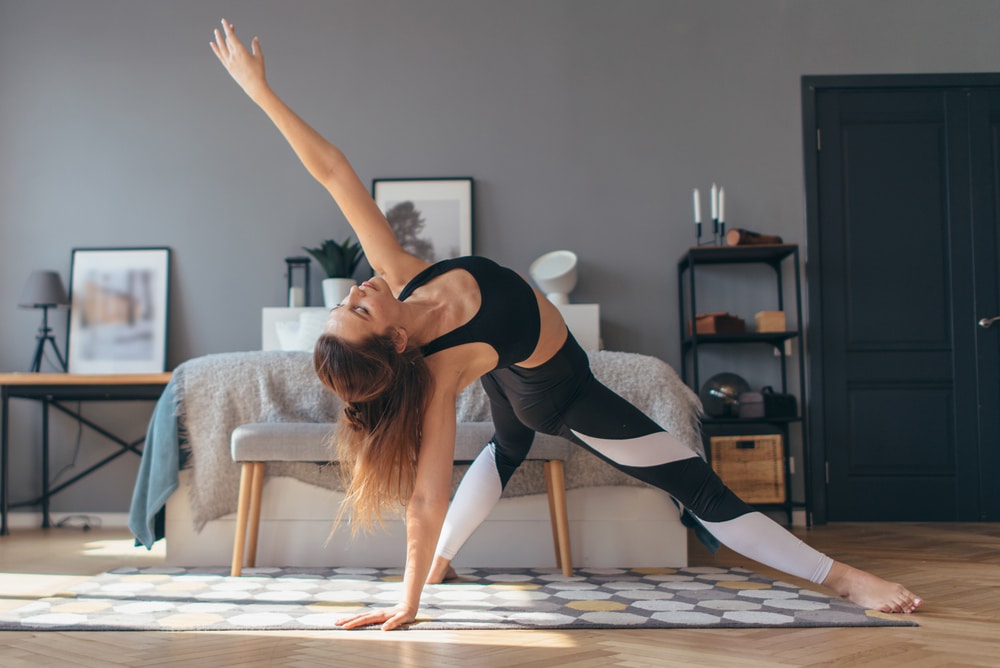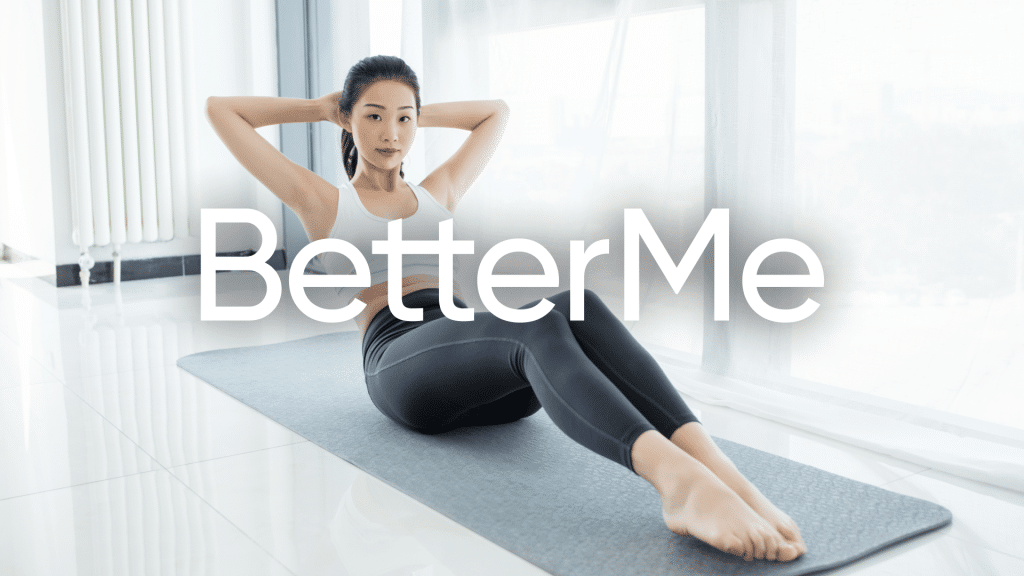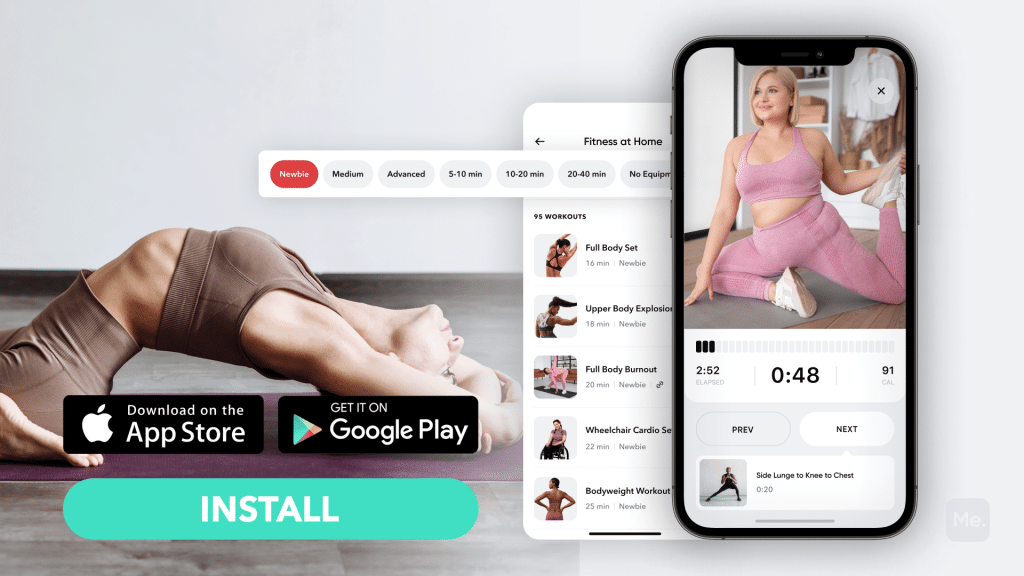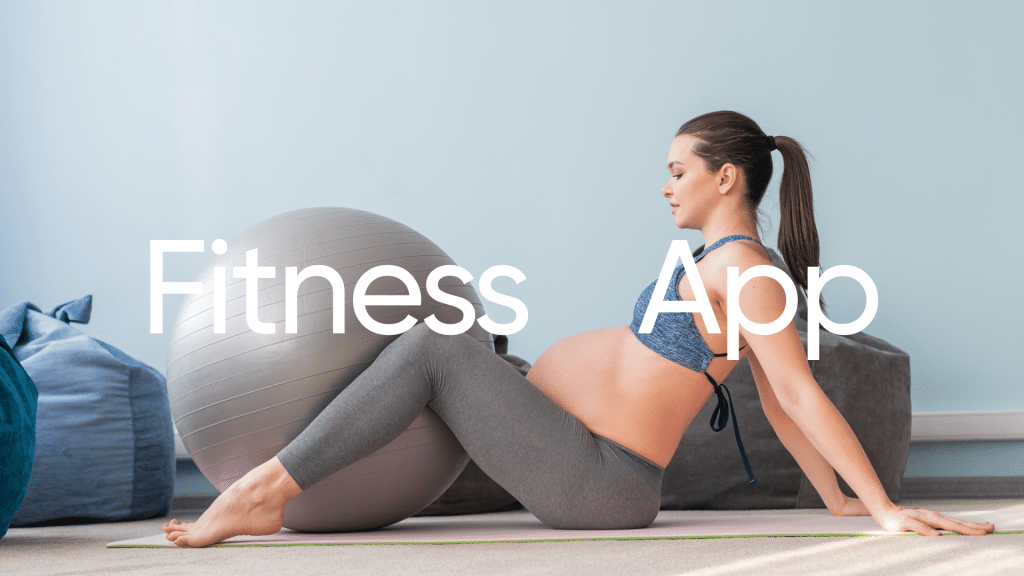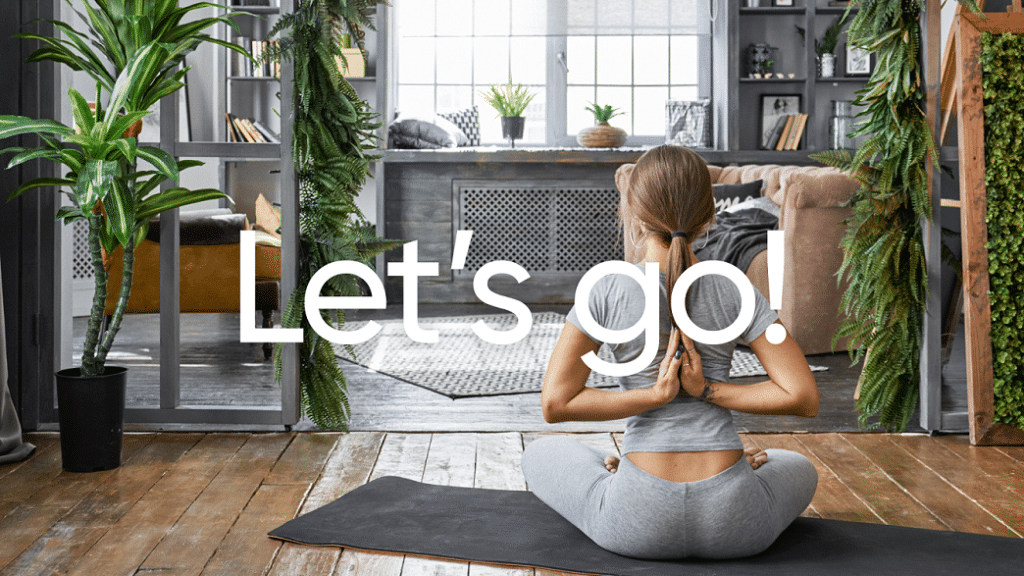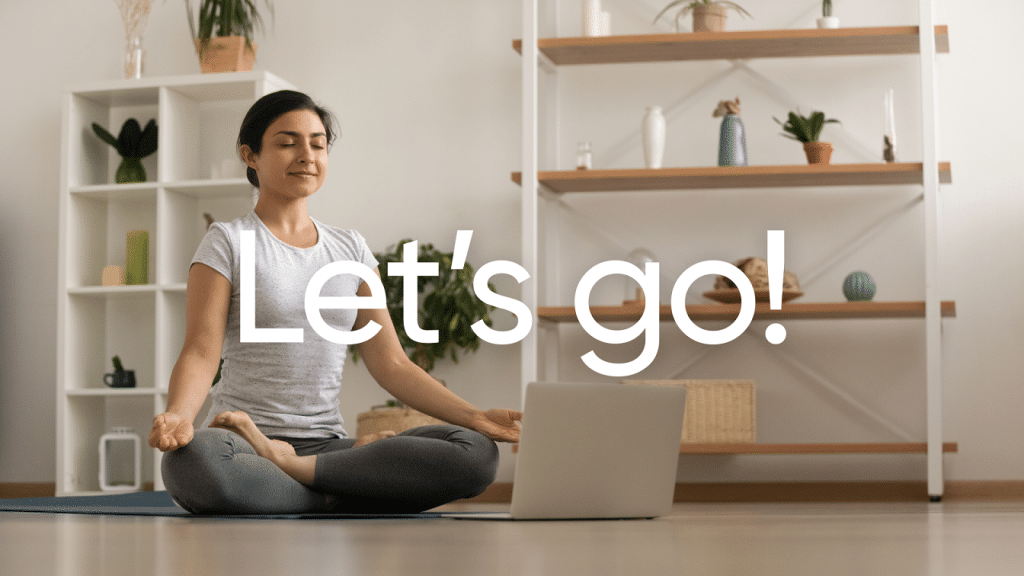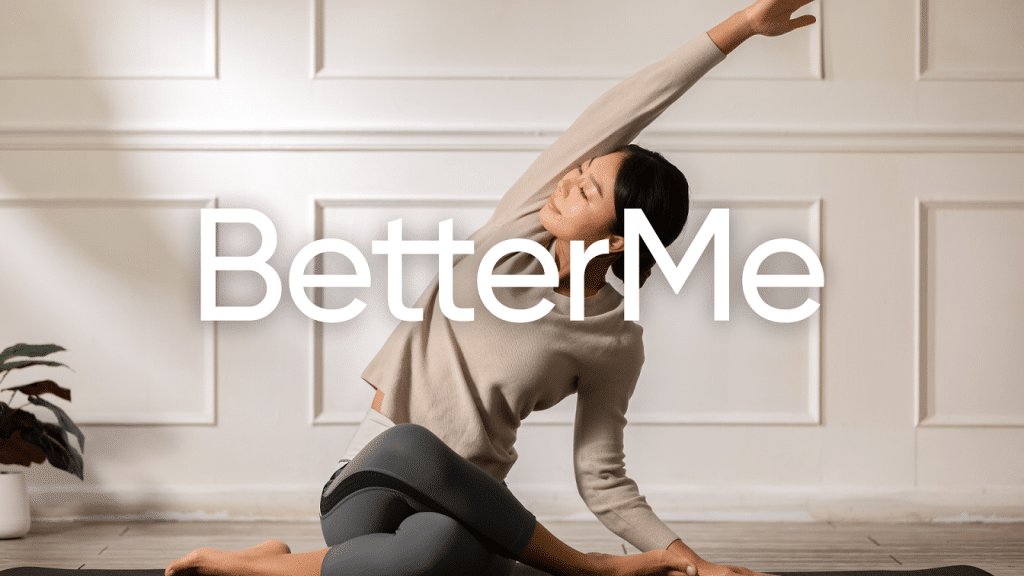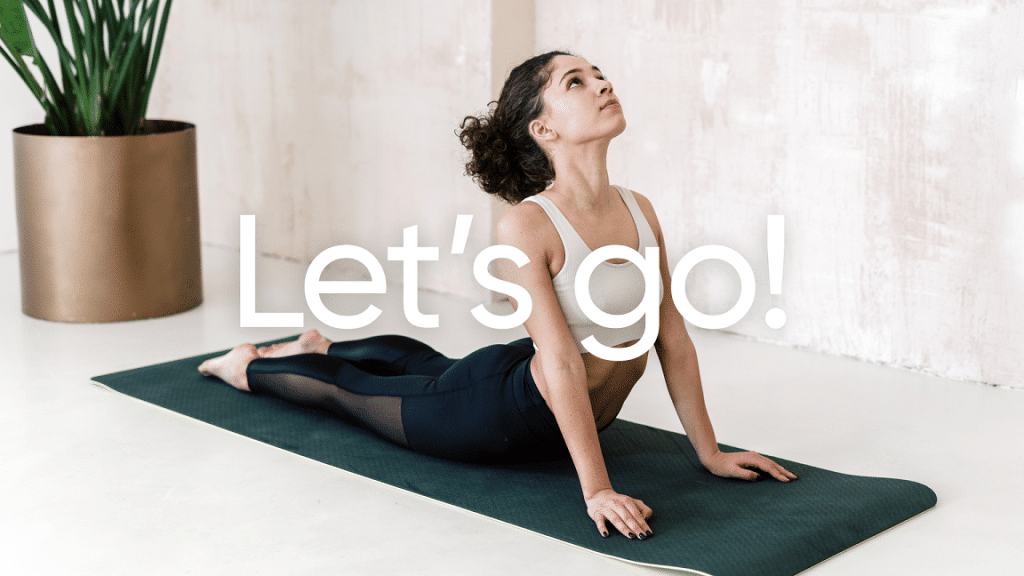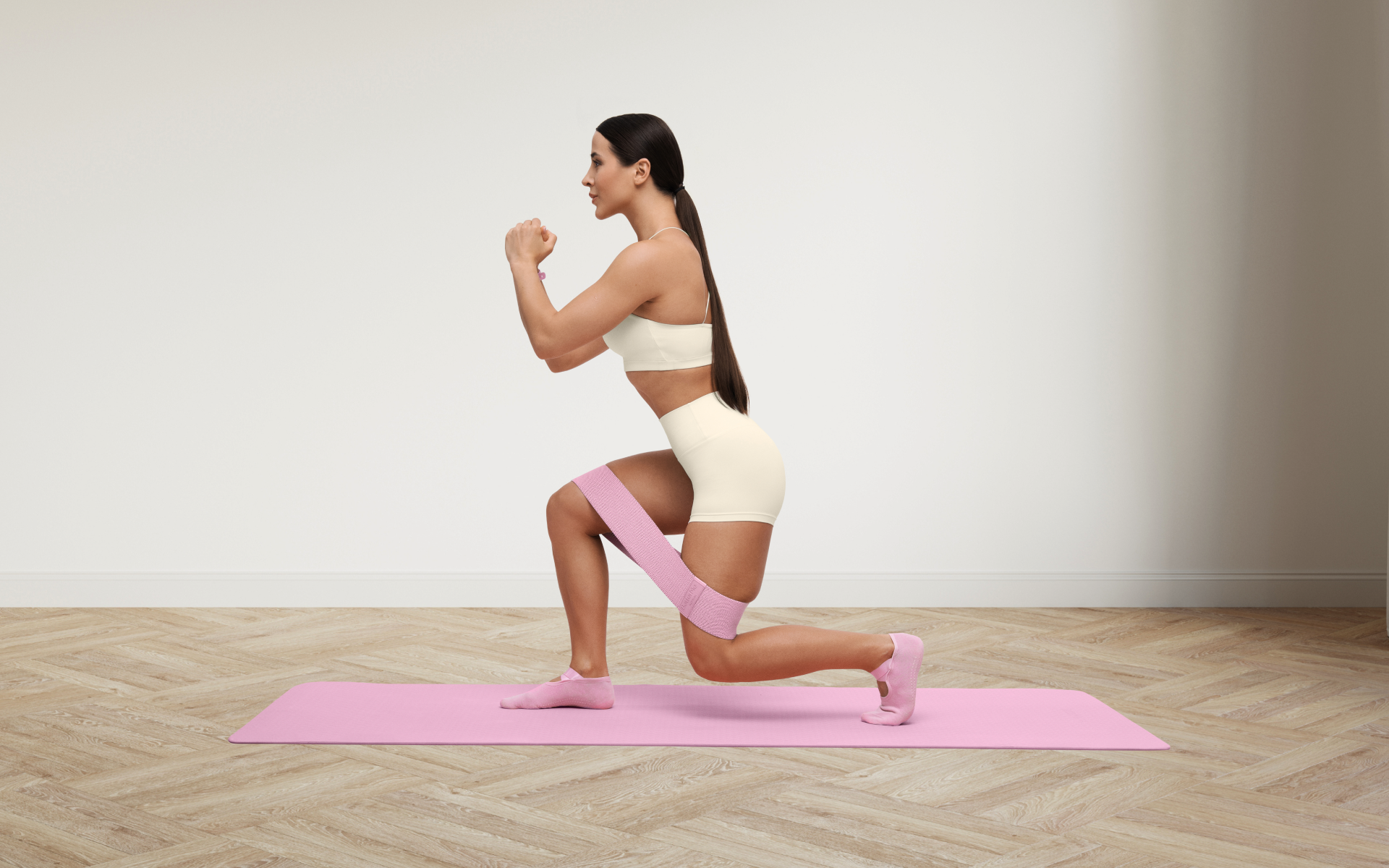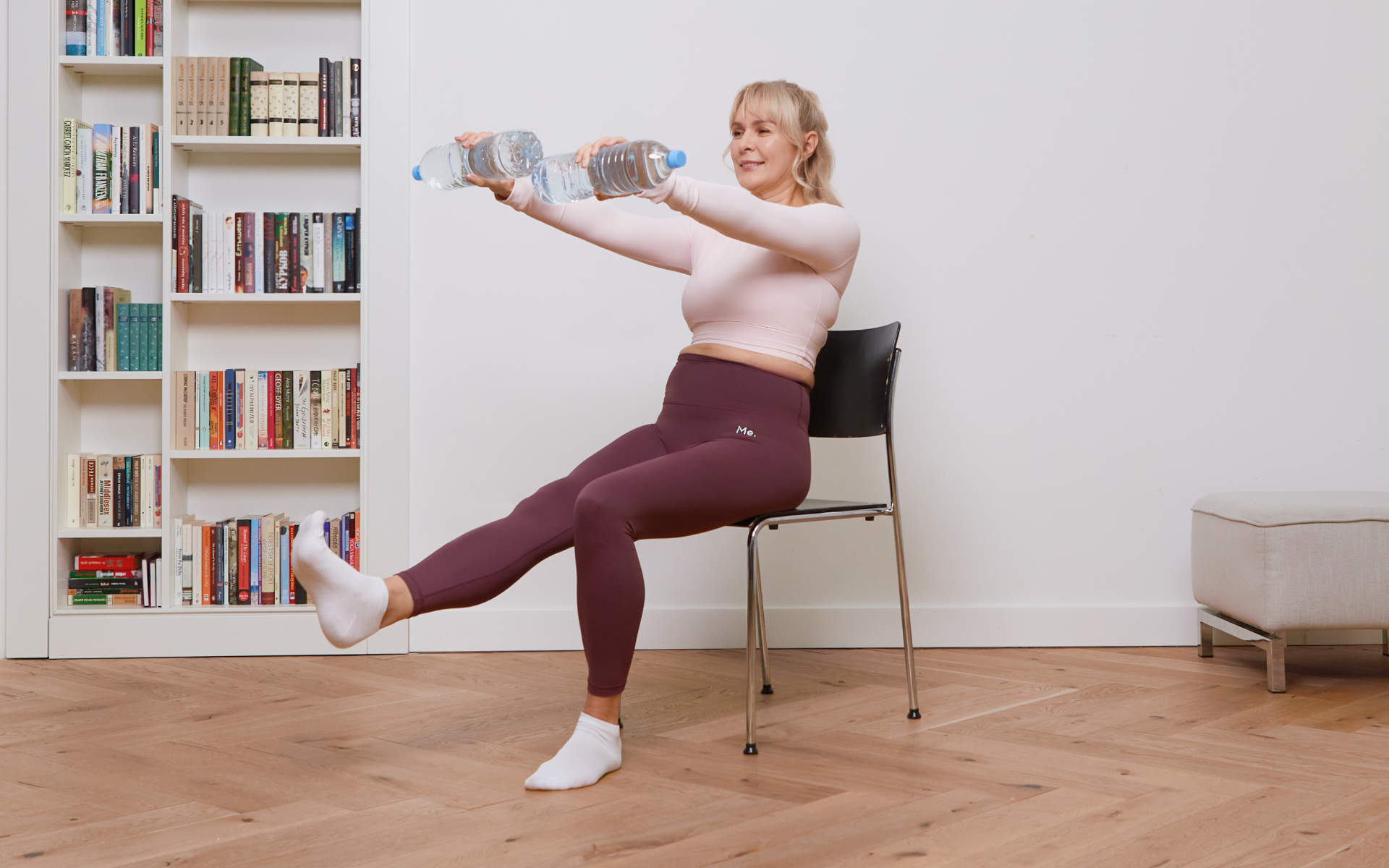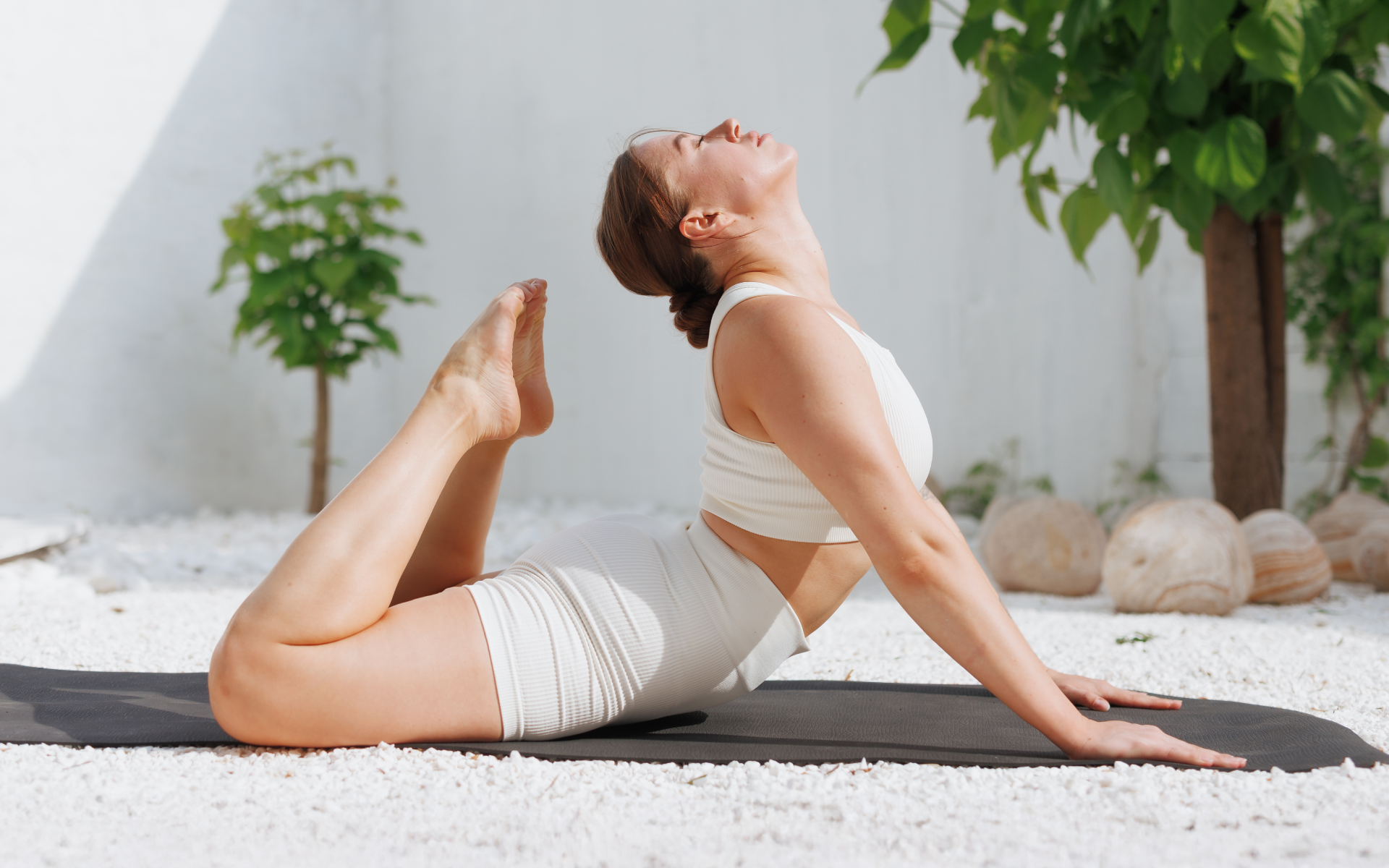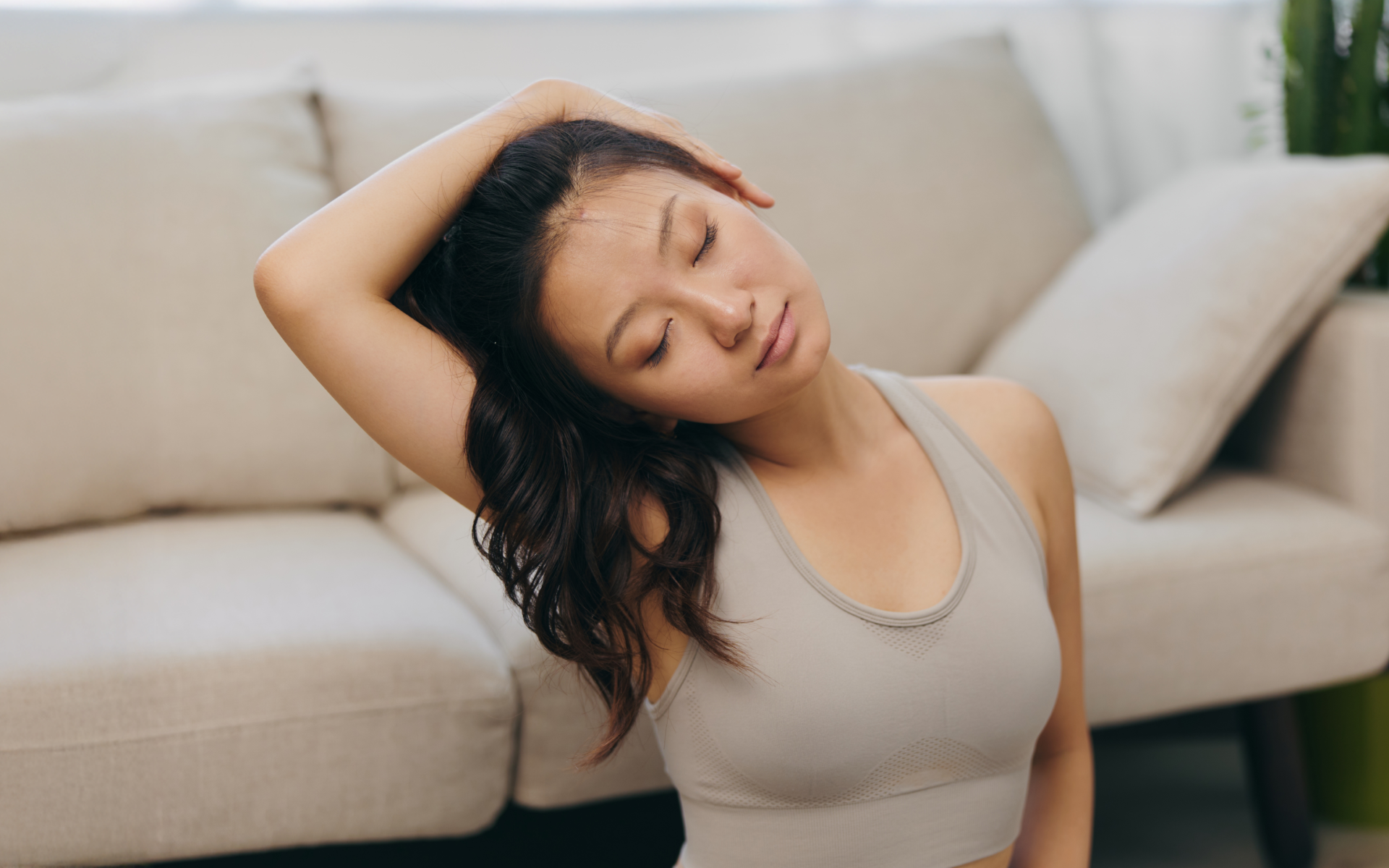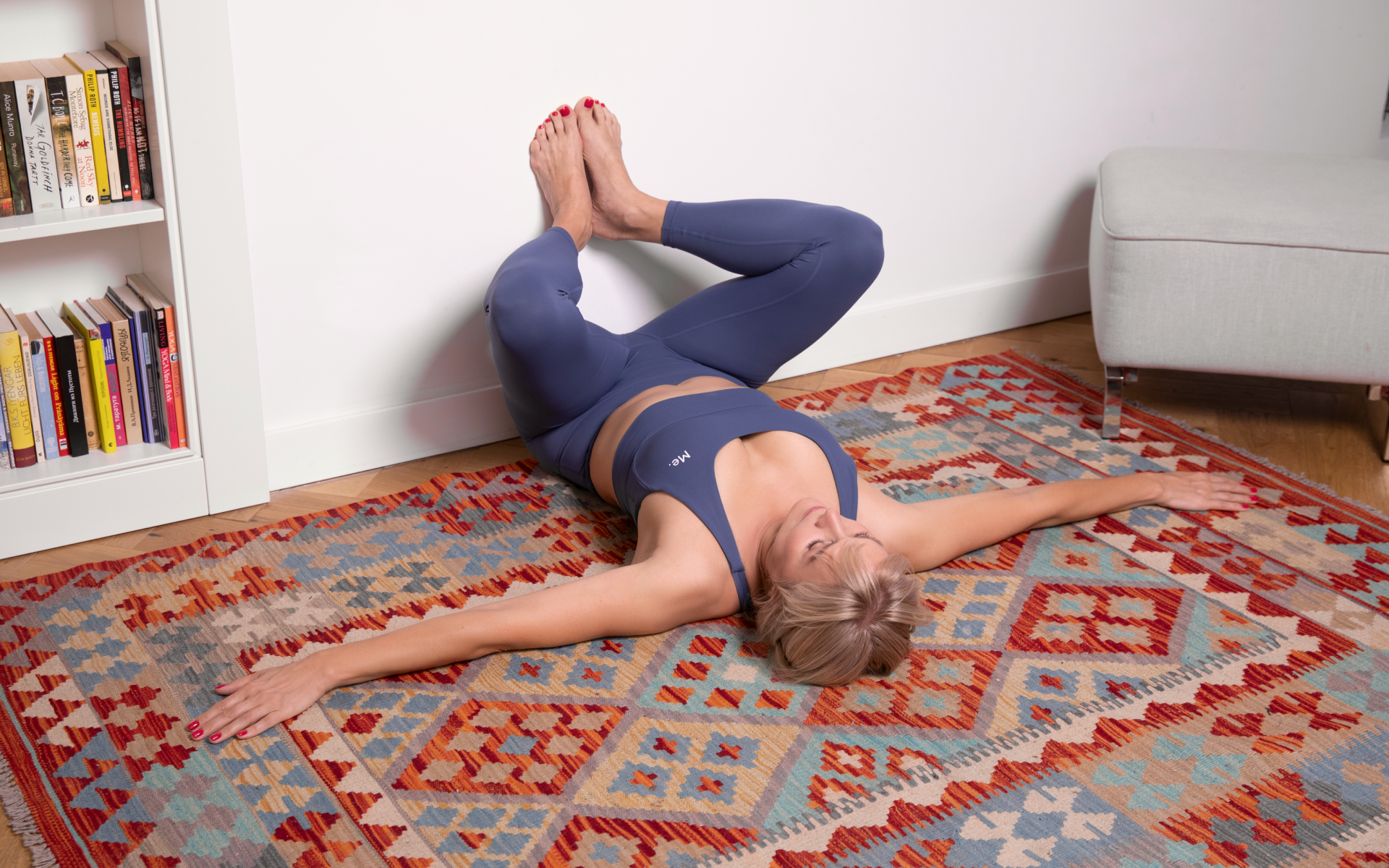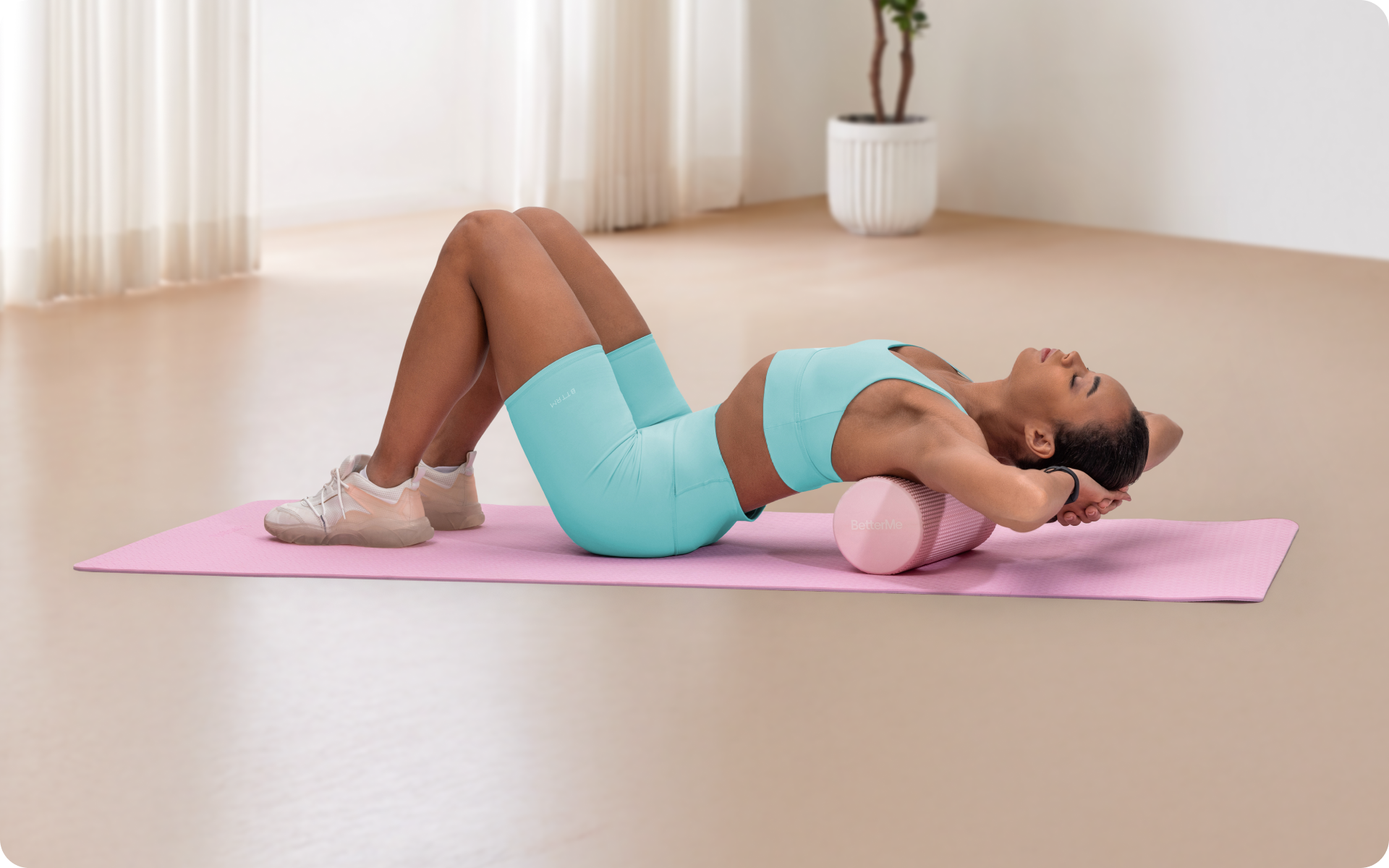Your back is one of the most important parts of your body. It performs a range of functions, from supporting your weight to allowing you to move in all directions. It’s important to keep your back healthy and strong, and one way to do that is by practicing backbends. Like most yoga positions, backbends offer a range of health benefits. They can stretch and tone your back muscles, improve your posture, increase your flexibility, and even help relieve stress. Backbends are also a great way to work on your core strength. Before starting a backbend practice, it’s important to learn the correct way to do them. Here is everything you need to know, plus a few beginner poses to get you started.
Get your personalized
meal plan!
Physical Benefits Of Backbends
Every day, your body endures a lot of stress. From lifting heavy objects to sitting in the same position for hours on end, your back takes a beating. Backbends are a great way to counteract all that stress. These exercises also:
Improve Posture
If you’ve been wondering, “do backbends actually improve posture?” the answer is a resounding yes. Poor posture can lead to all sorts of health problems, including back pain, neck pain, and tension headaches (7). By practicing regular backbends, you can improve your posture and restore your natural spinal alignment.
Good posture not only makes you look and feel better, but it can also improve your breathing and circulation. When you’re slumped over, your lungs have less space to expand, which reduces your ability to take in oxygen (1).
And because poor posture can put stress on your neck and spine, it can also cause blood vessels to constrict, leading to circulatory problems.
Increase Flexibility
Flexibility is the ability to move your body through its full range of motion. Flexibility is important for both your physical health and your mental health (8).
When you’re flexible, you’re less likely to injure yourself when you exercise or play sports. And because yoga is a mind-body practice, increased flexibility can also help you feel more relaxed and at ease in your daily life (3).
Improve Mobility
Mobility is the ability to move easily and without pain through your full range of motion (9). Mobility is important for two reasons. First, if you can’t move easily, you’re more likely to injure yourself.
Second, if you can’t move through your full range of motion, you’re not getting the most out of your exercises.
Backbends are a great way to improve your mobility. When you practice these poses regularly, you’ll gradually increase your range of motion, until you can move through your full range of motion with ease.
Read More: Elliptical Benefits: Weight Loss, Joint Strength, And More
Relieve Tension
Muscle tension is a common problem, especially among people who sit at a desk all day. Tight muscles can lead to pain and stiffness, and can even cause problems like headaches and neck pain (5).
Backbends are a great way to relieve tension in your muscles. These exercises stretch and tone your back muscles, which can help reduce muscle tension and pain. They also help improve your circulation, which can further reduce muscle tension.
Ease Digestion
Backbend poses stimulate the digestive organs and help to improve bowel function. They also help to relieve constipation and gas. Some research has found yoga to be helpful in relieving digestive symptoms in patients with irritable bowel syndrome (4).
Aid Detoxification
This is because they massage the internal organs and help to move lymph fluid around the body. Lymph fluid is responsible for removing toxins from the cells, so by improving lymphatic drainage, backbends can help to detoxify your body (6).
Relieve Stress
Yoga is a great way to relieve stress and tension. The poses, the breathing exercises, and the relaxation techniques all help to calm the mind and ease the body’s tensions (3).
Backbends are a particularly good way to release stress because they open up the chest and allow more air to flow into the lungs. This increased oxygen intake can help to clear the mind and calm the emotions.
Stimulate Your Heart Chakra
The heart chakra is the center of love and compassion. When it’s open, you experience feelings of joy, peace, and love. When it’s blocked, you may feel angry, resentful, or bitter (2).
Backbend poses can help to stimulate your heart chakra. They open up the chest and allow more air to flow into the lungs. This increased oxygen intake can help to clear the mind and calm the emotions. It can also help you to experience more love and compassion for yourself and others.
Dropping pounds by the dozens without putting yourself through the wringer is everyone’s weight loss pipe dream. But what if we told you that the BetterMe app can make that happen? Keep yourself in prime shape with our fat-blasting workouts, delicious budget-sparing recipes, and body-transforming challenges with our app!
Beginner Backbend Poses
If you’re just starting out, it’s best to begin with some simple backbends. These poses are gentle and easy to learn, and they offer a good introduction to the benefits of backbending.
Bridge Pose (Setu Bandha Sarvangasana)
The bridge pose is a basic backbend that strengthens and stretches the back muscles. It also helps to improve flexibility in the shoulders and hips.
How to Do It:
- Lie on your back with your feet flat on the floor and your knees bent. Place your hands on the floor beside your hips.
- Push your feet and hands into the floor and lift your torso and hips off the floor. Keep your chin parallel to the floor, and hold for 5-10 breaths.
- Release back to the starting position and repeat 2-3 times.
Puppy Pose (Uttana Shishosana)
The puppy pose is a gentle backbend that stretches and strengthens the back muscles. It also helps to open up the chest and improve flexibility in the shoulders.
How to Do It:
- Come onto all fours with your hands directly below your shoulders and your knees directly below your hips.
- Keeping your hips lifted, lower your chest to the ground.
- Arch your back and tuck your chin, and hold for 5-10 breaths.
- Release back to the starting position and repeat 2-3 times.
Cobra Pose (Bhujangasana)
The cobra pose is a simple backbend that strengthens and stretches the back muscles. It also helps to open up the chest and improve flexibility in the shoulders.
How to Do It:
- Lie on your stomach with your feet together and your hands flat on the floor under your shoulders.
- Slowly lift your chest, and shoulders off the floor. Keep your hips on the floor, and hold for 5 deep breaths.
- Lift your hands off the ground slightly and stay lifted in your chest. Hold for an additional 5 breaths, and then release back to the starting position.
- Repeat 2-3 times.
Read More: Best Back Workouts With Dumbbells You Can Do Anywhere
Intermediate Backbend Poses
If you’re comfortable with the beginner poses, you can move on to some intermediate backbends. These poses are a little more challenging, but they offer even more benefits than the beginner poses.
Camel Pose (Ustrasana)
The Camel Pose is an intermediate backbend that stretches and strengthens the back muscles. It also helps to open up the chest and improve flexibility in the shoulders.
How to Do It:
- Come onto your knees with your feet hip-width apart. Bring your hands to your lower back, and tuck your chin.
- Lift your torso and hips up and away from the floor. Keep your knees slightly bent, and hold for 5-10 breaths.
- Release back to the starting position and repeat 2-3 times.
Fish Pose (Matsyasana)
Also for intermediate Yogis, the Fish Pose is a great way to open up the chest and stretch the back muscles. It’s especially good for those with stiff necks or tight shoulders.
How to Do It:
- Lie on your back with your legs extended and your arms by your sides.
- Using your forearms, lift your upper body off the floor and tilt your head back.
- Ensure the top of your head is on the mat
- Slide your hands under your buttocks and hold for 5-10 breaths.
- Hold for 5-10 breaths, and then release back to the starting position.
- Repeat 2-3 times.
Advanced Backbend Poses
After practicing the intermediate poses, you may be ready to try some advanced backbends. These poses are more challenging and require greater flexibility and strength.
Do not attempt these poses without proper instruction from an experienced yoga teacher.
Wheel Pose (Urdhva Dhanurasana)
The Wheel Pose is an advanced backbend that strengthens and stretches the back muscles. It also helps to open up the chest and improve flexibility in the shoulders.
How to Do It:
- Come into a seated position with your knees bent and your feet flat on the floor. Place your hands on the floor behind you, and press into your hands as you lift your torso and hips off the floor.
- Straighten your arms and legs, and lift your chest and hips as high as you can. Keep your chin parallel to the floor, and hold for 5-10 breaths.
- Release back to the starting position and repeat 2-3 times.
Want to build an attention-grabbing bubble butt, blast away fat that’s stored in all the wrong places, spring-clean your diet, turn back the clock on your skin, skyrocket your self-confidence and shatter your insecurities? Check out the BetterMe app and set this plan in motion!
King Pigeon Pose (Kapotasana)
The King Pigeon Pose is a deep hip opener that stretches and strengthens the back muscles. It also helps to open up the chest and improve flexibility in the shoulders.
How to Do It:
Come into a low lunge position with your right foot in front of your left foot and your hands on the floor behind you.
- Shift your weight onto your left hip and fold over your right leg.
- Place your right hand on the floor behind you, and reach your left arm up towards the ceiling.
- Stay here for 5-10 breaths, and then release back to the starting position.
- Repeat on the other side.
How Long Should You Hold A Backbend?
How long you should hold a backbend depends on the pose and your level of flexibility. As a general rule, aim to hold each pose for 5-10 breaths. You can always stay in a pose longer if it feels good!
The trick is to listen to your body and not push yourself too hard. If you feel discomfort or pain in a backbend, come out of the pose and try again later. With patience and practice, you’ll be able to progress further in your yoga practice and explore more challenging poses.
What Happens If You Do Backbends Every Day?
It depends. If you are new to yoga, it is best to avoid backbends until you have built up some strength and flexibility.
Overdoing it can lead to pain and injury, so it’s important to be mindful and take it slow. As you progress in your yoga practice, you’ll learn which poses are best for you and how to safely explore deeper backbends.
That being said, there is no harm in practicing backbends occasionally. In fact, they can be quite beneficial for the spine and back muscles. Just be sure to listen to your body and take it easy if you’re not used to doing them.
If you’re an advanced yogi, you may be able to practice backbends every day without any problems. Just make sure to mix it up and include other poses targeting other muscles in your routine as well.
How To Stay Safe While Practicing Backbends
Like any other pose in yoga, backbends should be practiced with caution. Here are a few tips to help you stay safe while doing backbends:
Consult With Your Doctor
Make sure your spine is healthy and free of injury before attempting any backbends. If you have any questions or concerns, consult with a health professional before starting a yoga practice.
There are several categories of people who should not do backbends: those with a history of back injury, pregnant women, and those with high blood pressure.
Start Slowly
If you are new to yoga, start slowly and build up your strength and flexibility over time. Don’t try to do too many advanced poses at once. Start with basic poses and work your way up.
Do not attempt advanced poses without proper instruction from an experienced teacher.
Listen To Your Body
When you’re in a backbend, listen to your body and back off if you feel any pain or discomfort. Don’t try to push yourself too far – the goal is to feel good, not to experience pain.
Be Patient
It takes time and practice to build up the strength and flexibility needed for advanced backbends. Don’t get discouraged if you can’t do them right away. With patience and practice, you’ll be able to progress further in your yoga practice.
The Bottom Line
Backbends offer a variety of benefits ranging from increased flexibility and strength to improved posture and a better sense of wellbeing. By practicing these poses correctly, you can safely enjoy all the benefits they have to offer. Just be sure to start slowly, listen to your body, and take it easy if you’re not used to doing backbends.
DISCLAIMER:
This article is intended for general informational purposes only and does not serve to address individual circumstances. It is not a substitute for professional advice or help and should not be relied on for making any kind of decision-making. Any action taken as a direct or indirect result of the information in this article is entirely at your own risk and is your sole responsibility.
BetterMe, its content staff, and its medical advisors accept no responsibility for inaccuracies, errors, misstatements, inconsistencies, or omissions and specifically disclaim any liability, loss or risk, personal, professional or otherwise, which may be incurred as a consequence, directly or indirectly, of the use and/or application of any content.
You should always seek the advice of your physician or other qualified health provider with any questions you may have regarding a medical condition or your specific situation. Never disregard professional medical advice or delay seeking it because of BetterMe content. If you suspect or think you may have a medical emergency, call your doctor.
SOURCES:
- Effect of Different Head-Neck Postures on the Respiratory Function in Healthy Males (2018, hinadawi.com)
- Everything You Need to Know About the Heart Chakra (2021, yogajournal.com)
- Exploring the therapeutic effects of yoga and its ability to increase quality of life (2011, ncbi.nlm.nih.gov)
- Irritable Bowel Syndrome: Yoga as Remedial Therapy (2015, hindawi.com)
- Neck pain: Overview (2010, ncbi.nlm.nih.gov)
- Physiology, Lymphatic System (2021, ncbi.nlm.nih.gov)
- Postural awareness and its relation to pain: validation of an innovative instrument measuring awareness of body posture in patients with chronic pain (2018, biomedcentral.com)
- The Importance of Flexibility for Functional Range of Motion (2006, journals.humankinetics.com)
- What Is Mobility And Why Does It Matter? (n.d., osrpt.com)
